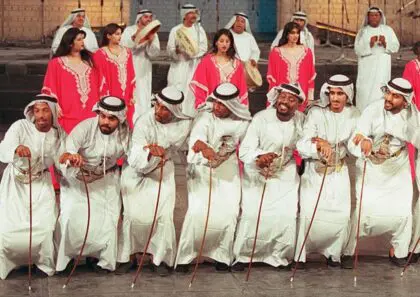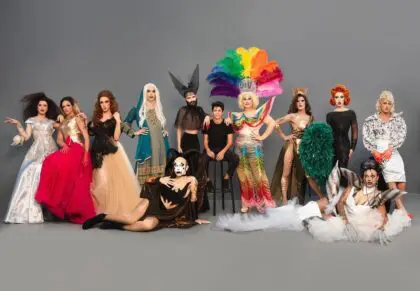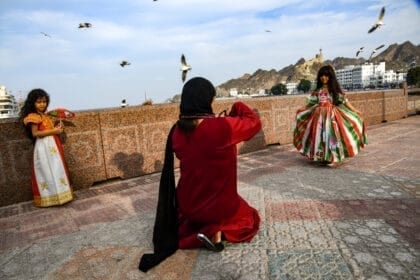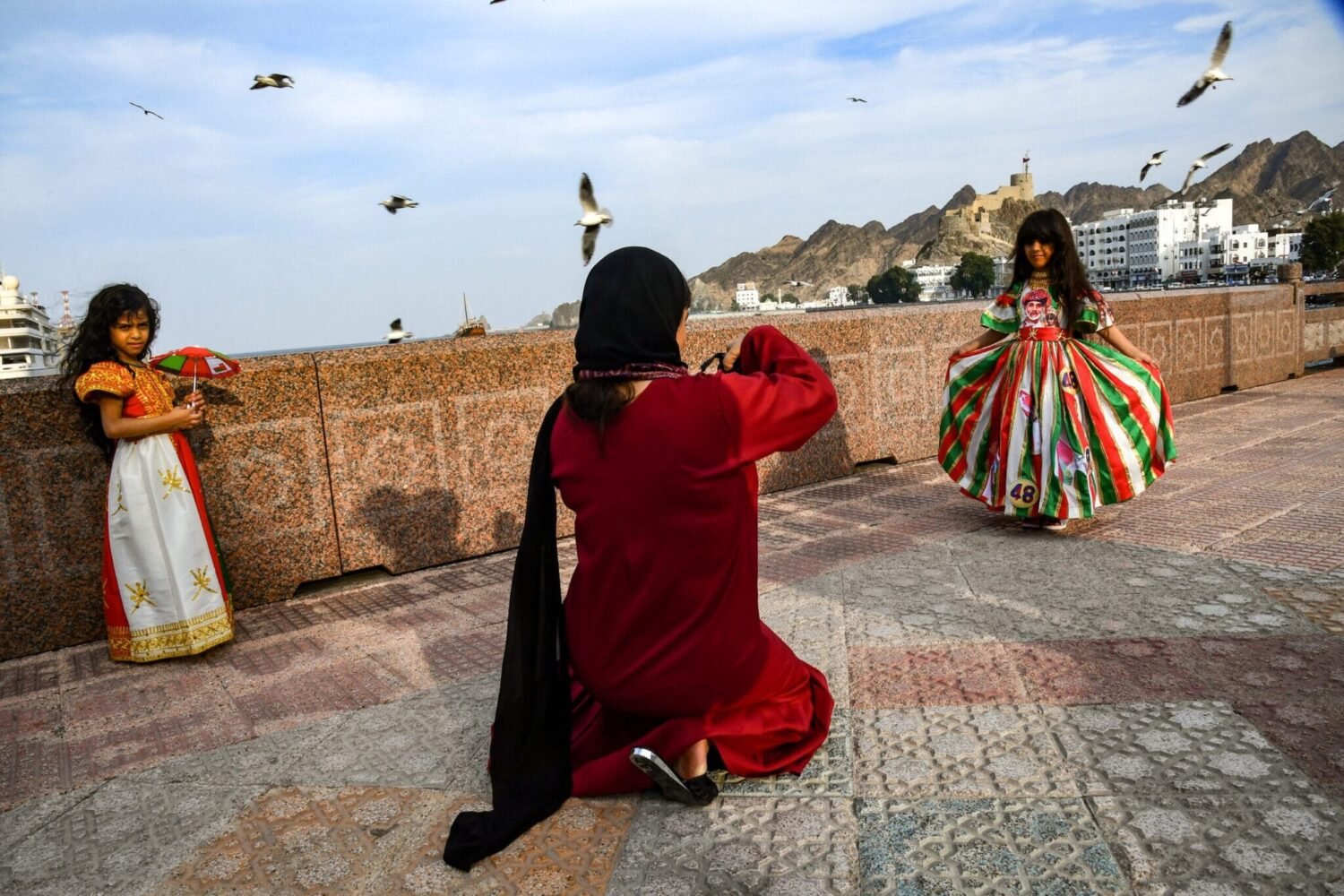
Introduction
The sultanate of Oman is distinguished from its surrounding Gulf and Arabian sphere by its heritage and legacies. This distinction manifests in the sultanate special fashion and traditional arts; not to mention customs which Omanis hold dear, besides the common heritage activities and events shared between Oman and the Gulf, such as camel races, horse races, bullfighting and others. Oman is also distinguished by its archaeological sites and its sturdy castles across the sultanate.
The Omani Culture is considered rich with its own customs, traditions and folklore arts decorating its occasions. Omanis are famous for their distinguished folklore arts such as Razha, Midan and A’azi which are very apparent in their wedding parties, religious and national festivities. Also, Omanis take pride in their crafts and there are a lot of them still working in this profession under the supervision of the Public Authority for craft industries, which encourages Omani to keep this kind of profession and concerns itself with teaching the next generations. Muscat was chosen as the capital of Islamic heritage and culture in 2006, and Nizwa was also chosen in 2015, which indicates and reflects how deep the civilization and culture is rooted in Omanis.
While the Omani heritage is an outcome of a culture built up over centuries with varieties and features that left its mark everywhere in the Sultanate, and earned it its distinctive features, it is safe to say that Oman’s modern culture is the outcome of a journey that lasted for decades since 1970, as the sultanate opened up after an international isolation during the reign of Sultan Said bin Taimur, and so the elements of a modern culture began to take form.
Omani literateurs have always been purely creative, as Omani literature – over half a century -witnessed several affecting breakthroughs, and major steps towards opening up to the inflowing modernity. Omani journalism successfully made changes and attracted a lot of literary figures, especially from the visiting scholars who traveled across several global and Arabian capitals. Then, many literary and cultural centers were established across the Sultanate, along with the literature prosperity of Muscat and Salalah.
The publishing of cultural literary magazines such as “al-Ghadir” and “al-Seraj” was an effective event. Readers came to know new literary publications, the most prominent of which were the works of the novelist Abdallah al-Tai, who was the minister of information in the early 70s. Also, the Omani theatre has developed since the expansion of the Omani education system in the early 70s.
Theatre groups began to emerge from the Youth Theatre that was founded in 1980. The 1990s witnessed a breakthrough in Omani cultural production as the Omani scholars returned simultaneously with the rising of Arab cultural magazines, as the opportunities for Omani writers to communicate with Arab magazines and institutions increased.
Furthermore, western classical music is an integral part of Omanis’ memory thanks to the Royal Omani Orchestra, which was founded in 1985. It developed since then to become one of the best Orchestras in the Arab world.
To learn more about the culture of Oman with all its aspects, check what Fanack has covered about this file.
Literature
Oman’s literary heritage is extensive. Most written texts used to centre on the subjects of religion, history and culture. One of the earliest surviving manuscripts dates from the 9th century: al-Siyar al-Umaniya (Omani Lives) by Abu al-Muthir al-Salt al-Bahlawi. Ansab al-Arab (Arab Genealogies), attributed to Salama al-Awtabi, is of great value for reconstructing the history of the tribes in Oman. Al-Awtabi lived in Sohar in the 11th century. Other important writers for reconstructing the cultural history and genealogy are Oman Sirhan ibn Said, who purportedly wrote Kashf al-Ghumma (Dispeller of Grief, later published as Annals of Oman in 1728) and 19th century Salil ibn Raziq (History of the Imams and Sayyids of Oman).
Since the 1970s, there have been several attempts to found a writer’s organization. The National Cultural Club was founded in 1975. Early magazines include The New Culture and Algadeer, founded by Ahmed al-Falahi. In 2008, the Omani Society of Writers and Literati, which publishes The Noon, was established. It also promotes Omani literature on the international stage. Nizwa is another literary and cultural magazine that aims to encourage Omani writers.
It also publishes work by writers from other Arab countries as well as Arabic translations of texts from other languages. Its editor-in-chief is poet and prose writer Saif al-Rahbi. He also works as a journalist for Banipal, a magazine for modern Arab literature translated into English, which is published in the United Kingdom. In 2008, the newspaper Times of Oman started publishing Beacon, another literary magazine.
In 2007, with the support of the Emirates Foundation in Abu Dhabi, the prestigious International Prize for Arabic Fiction was established in association with Booker’s. In 2009, there were 131 entries from sixteen countries, including one Omani author. The aim is to reward excellence in contemporary creative Arab writing and to encourage wider readership of quality Arabic writing internationally. It also promotes publication of Arabic literature in other major languages.
Poetry has always been the major literary form in Arab culture and poets enjoy great respect and esteem. There are many well-known contemporary poets, such as Abdullah al-Taiey (who was the Minister of Information in the early 1970s), Sheikh Abdullah bin Ali al-Khalili, Abu Surur Humayd al-Jamii, Mahmud al-Khusaybi, Hilal bin Badr and Muhammad Amin Abdullah. The Ministry of Heritage and Culture organizes an annual Poetry Festival that aims to encourage Omani poets and to promote Omani poetry. The festival is popular and attracts leading poets from other Arab countries.
Traditional Music and Dance

Oman’s heritage of performing arts, in particular music, songs and dance, is wealthy and diverse. Percussion instruments such as the kasir and rahmani are dominant in traditional music. Other instruments include various types of duff (tambourine), and khulkhal, an ankle bracelet.
Music genres spring from all aspects of Omani life: festive occasions such as births, circumcision, marriage, religious celebrations, national festivals, children’s games. Music also played an important part in all activities related to the sea, such as the casting or hauling of nets, and hoisting or lowering of the sails.
Art, song and dance were influenced by contacts with Africa and the western part of Asia. (Several types of drums and many dance genres come from Africa.) The bowl lyre (tanbura, Oman’s only known chordophone, apart from the ud), came from Africa (where it is known in different countries under various names).
The surnay, a single or double reed wooden oboe, is one of the few melodic instruments. It is of Baluchi origin. It spread from Oman throughout the Arabian Peninsula. The use of a conch may have been influenced by contacts with India.
The public is acquainted with western classical music through the Royal Oman Symphony Orchestra (ROSO), founded in 1985. It has since become one of the best orchestras in the Arab World.
Crafts
Traditional crafts such as shipbuilding, metal, copper, silver- and goldsmithery, weaving, embroidery, and pottery making have always played an important role in the urban, rural and pastoral economy of Oman. The skills were handed down from one generation to the next. Some date back as far as the 3rd millennium BCE. The country preserves and encourages craftsmanship, which is viewed as part of Oman’s cultural heritage, despite the fact that craftwork, for example silver work, is executed by migrants.

Silver jewellery is produced in a large variety of forms and decorations. Bracelets, rings, necklaces and hair or forehead decorations are the most popular, which are chiselled, engraved or embossed with geometric and floral patterns. Besides a beautiful and personal adornment, jewellery for women is also an investment, which can be brought to market in times of financial need. Mainly for this reason silver is gradually being replaced by gold jewellery and other decorative items.
Throughout the centuries, wool production of sheep, goat and camel hair has provided the inhabitants with mats, bags, clothes, tent lining and other useful, warm and long lasting products. Bedouin women still mostly do the weaving; settled (hadar) men also work with ground looms, and the pit loom in particular. Motifs are mostly geometrical and resemble decorative Bedouin patterns all over Arabia, although there is a distinctive Omani touch. The dominant colours are black, red, and white.
The government, represented by the Public Authority of Craft Industries, sponsored a series of Craft Revitalisation Projects to encourage and support traditional artisans, including the Omani Heritage Gallery, the Silver Revitalisation Project and the Copper Revitalisation Project. The aim of the Authority is to develop handicrafts.
Training programmes for craftsmen enhance their skills in order to develop quality products that are in demand from consumers. Craft centres have been established in various parts of the Sultanate to protect the crafts, for example in al-Dakhiliya and Musandam for weavers and potters, and in al-Sharqiya for the production of wooden ship models and handmade carpets.
Traditional Arts
Rock art, found on formations alongside normally dry river beds (wadis) in the Western Hajar (Jabal al-Akhdar), dates back to at least the 3rd millennium BCE. Men, women, children and animals are depicted in a large variety of manners. Intricate floral and geometric designs are typical in Omani jewellery, woodwork, metal, leatherwork, pottery, weaving and other textiles.
Oman’s architecture is impressive. Traditional monumental forts and palaces, mosques and residences made from mud-brick or natural stone blend in with the impressive landscape. The architectural style of most forts and large residences is typical for the Arab and Islamic world. The buildings have high, thick walls, few windows and usually a square plan with round towers at the corners.
Stern and strong on the outside, they have a monumental entrance with large wooden doors often decorated with brass spikes, in which there is a small door for daily use. On the inside, there are vaulted arches over the gateways and high windows, carved wooden ceilings, and roof beams decorated with colourful floral and geometric designs. Elegantly carved wooden window screens (mashrabiya) let the wind blow freely, but keep the sun out.
They give way to spacious and sun-lit inner courtyards. Water running through a falaj (the ancient irrigation system, that still functions) and from wells inside the building ensure the residents of water and constantly moisten the hot and dry air.
Jabrin castle, near Bahla, situated on the planes leading to the Jabal al-Akhdar region, is a typical example. It used to be the palace of the Yaruba dynasty (1624-1741), a period of cultural renaissance. The palace has a Koran school and a mosque on the top floor, which offers a magnificent view over the oasis with palm groves. Other forts built in the same period are al-Hazm on the Batina plane and Bayt al-Naaman near al-Rustaq.
In Matrah and Muscat other styles are found. The Portuguese, who dominated the Omani ports in the 16th and 17th century, built the two forts of al-Mirani and al-Jalali at the entrance of the Muscat harbour. The beautiful houses bordering the Matrah Corniche with elegantly decorated windows and wooden balconies bear witness to architectural influences from India, with which Oman always had close ties.
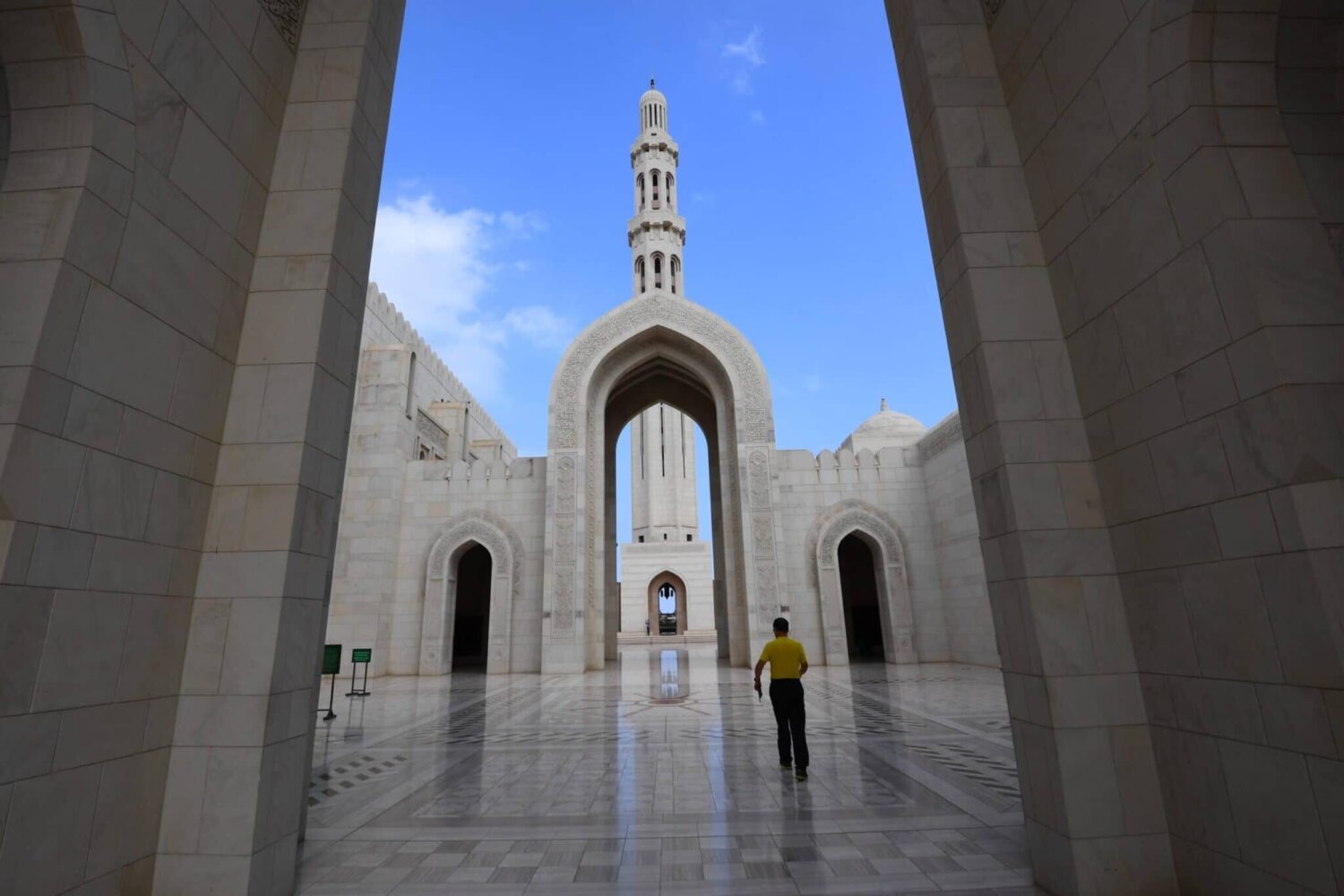
In many towns the traditional houses and living quarters, often located in or near the palm gardens and the market, have been abandoned and look dilapidated. The inhabitants have built their houses in new quarters near the sortie roads of the towns. Restoration of the older districts has now been put on the agenda. Nizwa is a successful example of this process.
Oman’s contemporary architecture is also inspired by Islamic motives and designs. New buildings display many characteristic features such as vaults (mashrabiya), scalloped and polylobate arches, curved lines, cupolas and fine decorations of circles, squares and octagons as well as arabesques. Koranic inscriptions are sometimes applied in various calligraphic designs on the outer and inner walls, above doors or on bands in the cupola. The new style sets examples for today’s architecture in the Arab world.
A magnificent example is the Sultan Qaboos Mosque in the Muscat governorate. This building combines traditional simplicity in forms and modest use of colours with an impressive grandeur in graceful design. The interior decoration is stunningly elegant, with crystal lamps, large Persian carpets, stained glass windows and marble decorations displaying the most famous decorative styles in the Islamic world.
Contemporary Fine Arts
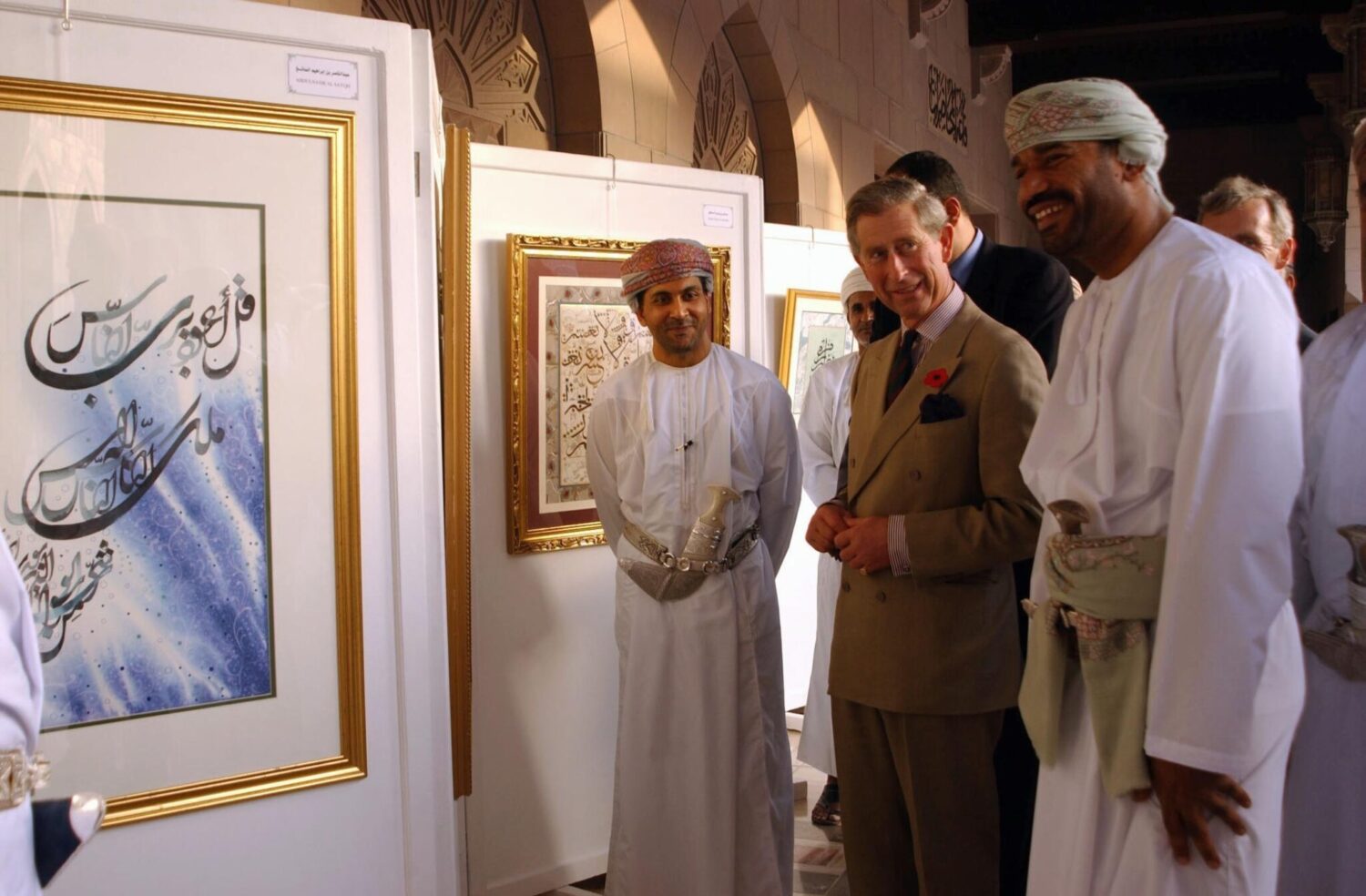
Contemporary fine art in Oman is a relatively new movement. Most professional artists studied abroad. In 1993, the government established the Omani Society for Fine Arts to support and encourage artists in all fields of fine art, including photography. Through workshops, exhibitions, awards and international contacts its members are challenged to develop their own skills and contribute to the progress of art.
A well-known artist is Anwar Sonya, one of the founders of Oman’s modern art movement, who has been awarded many prizes, both nationally and internationally. He is a member of the Circle, a contemporary and experimental art group. His work ranges from detailed landscapes and elements of Omani culture in a semi-abstract style to abstract expressionism. His multimedia pieces explore questions of life and death.
Abdullah al-Hunaini studied in the United Kingdom and is greatly inspired by the Pre-Raphaelites. Fatiya al-Badawi is a member of the Youth Studio. Her work has impressionistic traits, is colourful and relates to culture and nature. Hassan al-Meer’s abstract paintings show naive symbols in primary colours that reflect childhood memories, and are reminiscent of Paul Klee’s work. He also explores video and installation art. Muhammad al-Sayegh’s calligraphic work is made up of colourful images, and is rhythmic and contemplative.
Other successful artists are Maryam al-Zadjali, Muhammad Fadil al-Hasni, Saleh al-Shukairi, Nadira Mahmoud and Moosa Omar. Interesting photographers include Ibrahim al-Busaidi and Said Amur al-Harthy. Salem is one of the few sculptors. His marble work is based on ancient writing, culture, heritage and nature. Sarah White is a distinguished artist from the UK, who has been living and working in Oman for a long time. Her work is based on Omani architecture. She is an active associate member.
Popular Culture
Oman’s popular culture is diverse. Classical, religious and modern music, dance, poetry and theatre are performed, enjoyed and promoted by all ages across the country, using all modern means of communication. In popular culture preference is given to Arab music and culture.
Omani singer Muhammad Rafi Qasim al-Balushi and his daughter Asma Mohammed Rafi Qasim al-Balushi are well known from their TV and live performances. Salha is of Omani origin with parents from Zanzibar, Rahma Alsinani, Mohammed al-Mukhaini, Majid al-Marzooqi, Anwar Buhoor, and Sameera al-Balushi are a few other popular artists. In many parts of Oman there are entertainment activities for people of all ages. The Khareef festival was one of the first of its type in Dhofar. This annually held event attracts singers, actors, other performers and guests from Oman, the Gulf countries and increasingly from other parts of the Arab world. The festival also features a raffle, a fair and many other popular attractions. It lasts for a week.
The Muscat Festival, Muscat Idol talent hunt and many varieties of this formula are very popular for scouting new talent. Ramadan nights in the cities and villages are often devoted to traditional and popular performing arts in which many people like to participate.
Theatre and Film
The theatre in Oman has developed since the expansion of the educational system in the early 1970s. Theatre groups arose from the youth theatre, which was established in 1980, in various regions of the Sultanate. Egyptian scholars such as Mustafa Hashish and Mansoor Makawi were contracted to train the Omani actors. Some of them were sent to Egypt to attend courses in acting and directing. As a result, Egyptian performing arts and increasingly Gulf arts are popular examples and role models for local performing arts. Their typical style and form is well known from popular TV series, soaps, films and visiting theatre groups.
Young actors are Fakhria Khamis al-Ajami, Saud Salim al-Dermaki, Talib Mohammed al-Balushi, Abdul Razak Ali al-Mahrami, Said al-Hashmi, Hamad Khalfan al-Hadhrami, Masouma al-Dhahab and directors Mohammed Said al-Shanfari, Abdul Karim Ali Jawad and Ebrahim al-Zadjali. Saleh Zaal al-Farsi and Zoha Qader acted in the popular feature film al-Boom. Its director Khalid Abdul Rahim al-Zadjali is assistant director-general at Oman TV. He is also president of the Oman Film Society and of the Muscat Film Festival.
Performances in the field of theatre, concerts, cabaret and movies are held in community settings, at schools and on public stages. Many of these cater for the various expatriate communities. Beside the auditorium in the Bustan Palace Hotel, and the recently renovated al-Felaij Castle, the newly built Opera House in Shatti al-Qurum will open in 2011. Large hotels have suitable accommodation for staging performances and often invite prestigious groups from different countries and cultures. Cinemas have become popular and attract Omanis as well as Indians and other expatriates. Bollywood productions are also popular.
Sports

The most popular traditional sport in Oman, camel racing, still attracts a lot of people. Bedouin breed and train the camels for the races, which take place on racetracks and on makeshift courses in the open desert. Horse and even dhow racing are also sports that enjoy strong competition. The elite practices falconry.
Since the 1970s, Oman has endeavoured to promote sports and raise the level of competition. Football, basketball, rugby, cricket, athletics, taekwondo, swimming, diving, waterskiing, climbing, motor crossing, and even sand surfing have since become popular sports. In the afternoon, men and boys gather to play football in many towns, villages and on the beach. In 2004, the Ministry of Sports Affairs was established to replace the General Organization for Youth, Sports and Cultural Affairs.
400 metre runner Mohammed bin Amer was the first Omani to win a gold medal at the Asian Games held in Beijing in 1990. In 2008, Oman was represented by a female sportswoman at the Olympic Games for the first time in its history. Buthaina al-Yaqoubi, 16 years old, competed in the women’s 100-metre sprint, as well as the long jump and the triple jump. Other athletes include shooter Dad Allah al-Balushi, athlete Abdullah al-Sooli and swimmer Mohammed al-Habsi.
To date, Habiba al-Hinai occupies the highest position by a female in sports, as board member of the Omani Olympic Committee and the Oman Sports Club and vice chairwoman of the Oman Volleyball Association. Al-Hinai was a torchbearer for the Beijing Olympic relay in Muscat. In 2009, Oman hosted the 19th Gulf Cup, where Oman’s football team triumphed as title holder; the volleyball and handball teams both came second. In October 2020, Omani’s national football team ranked 82 in FIFA’s world ranking table.
Museums
Aquarium and Marine Science & Fisheries Centre is an aquacultural museum that has recently been renovated. The aquarium is located between the Al Bustan Palace Hotel and the Capital Yacht in Muscat.
Bayt al-Baranda contains the history of Muscat in thirteen different halls equipped with state-of-the-art interactive displays and is located in the heart of the tourist district on the seafront in Mutrah, Muscat.
Bayt al-Naaman is a beautiful small castle, restored and furnished in original Omani style by the Ministry of Heritage and Culture. The castle is located in al-Batina.
Bayt al-Zubayr has a vast collection of ancient household equipment, costumes and weapons. The museum is located next to the Ministry of Information in Muscat.
Children’s Museum is a science museum where children of all ages can enjoy scientific experiments through hands on experience. The museum is located near Qurum Nature Park in a white-domed building in Muscat.
Land of Frankincense hosts a vast number of ancient artefacts, from the excavated columns of buildings built two thousand years ago to pieces of stone tooling used by fishermen two thousands years before that. This national museum of Oman’s ancient and modern history is located in Salalah.

Muscat Gate Museum is also about Oman’s history from Neolithic times to the present. There is a special exhibit on Muscat’s water springs, ancient wells, underground channels, souks, houses, mosques, harbours and forts. The museam is located at the Mutrah Corniche in Muscat.
Nakhal Fort Museum, operated by the Ministry of Tourism on the Batina coast, contains a display of historic guns.
The National Museum contains silver ornaments, copper crafts and samples of Omani ships, and the letter sent by the Prophet Muhammad to the rulers of Oman in the eighth year of the Hijra. Operated by the Ministry of Heritage and Culture, the museuam is located above the Islamic Library in Muscat.
Natural History Museum offers a tour of Oman’s flora and fauna. The museum displays indigenous mammals, birds and botanical gardens. It is located at the Ministry of Heritage and Culture complex in Muscat.
The Oil and Gas Exhibition Centre & Planetarium was donated to the people of Oman by the oil and gas company Petroleum Development Oman in 1995. The planetarium is useful and interesting for both children and adults and teaches them about astronomy and modern science in an engaging way. The Exhibition Centre is located at the end of the Seih Al Maleh Street, in Muscat.
Omani-French Museum was the French consul’s residence, known as Bayt Faransa. It is dedicated to Omani-French relationships over the years and it contains historical documents, and samples of Omani – French ships in addition to Omani and French costumes & jewellery. Operated by the Ministry of Heritage and Culture, the museum is located on Lane 9310, Qasr Al Alam Street, in Old Muscat.
Museum of Omani Heritage contains detailed information about archaeology and artefacts. The Museum is located on Al Alam Street, on the hill behind the Ministry of Information in Muscat.
Salalah Museum displays a rich collection of inscriptions on large stone slabs and rocks. Most of these inscriptions were found in Khor Rori where excavations unearthed the port city of Sumharam. The museum is located in Salalah, in the south of Oman.
Sayyid Faisal bin Ali Museum displays Oman’s fortified architecture and traditional weaponry. The museum is located in the Ministry of Heritage and Culture complex, al Khuwair, Muscat.
Sohar Fort shows the importance of the ancient city of Sohar, its history of navigation and overseas trade with Canton in China. The fort is located in Sohar, 1.5 hour drive from Muscat.
The Sultan’s Armed Forces Museum. On Oman’s military history, located in the 150 year old Bayt al-Falaj fort, the original garrison headquarters for Sultan Said bin Sultan’s Armed Forces.
Latest Articles
Below are the latest articles by acclaimed journalists and academics concerning the topic ‘Culture’ and ‘Oman’. These articles are posted in this country file or elsewhere on our website:


